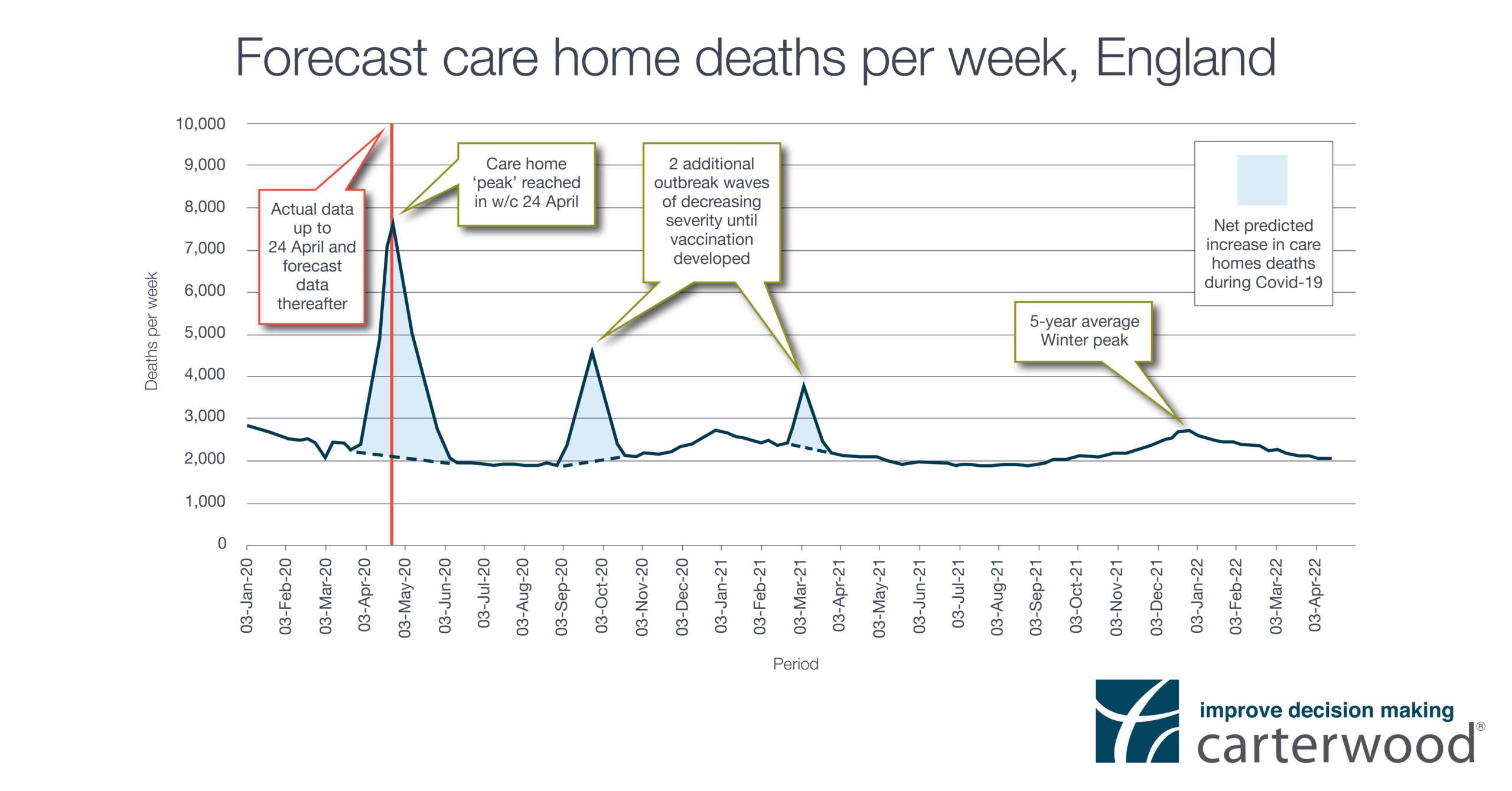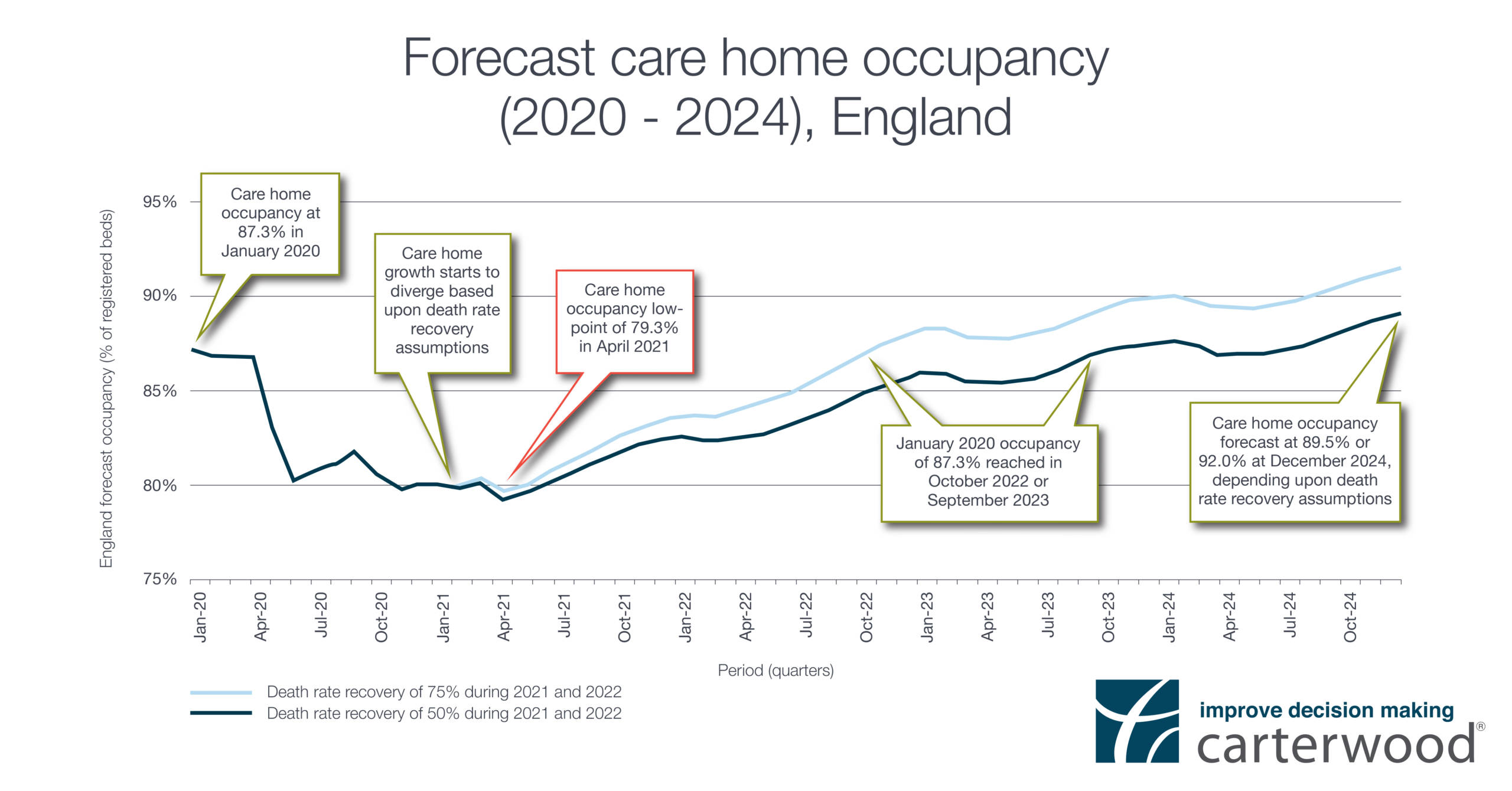As COVID-19 brings an unprecedented degree of scrutiny on the care sector, Ben Hartley, Director, talks about our research looking at the potential long-term impacts of the pandemic on care homes.
2020 has, no doubt, been the most challenging period in the recent history of social care in this country.
Anecdotally, all of us involved in the sector recognise that the short and medium term present significant challenges, but our aim in producing this initial research was to combine our sector knowledge and expertise with the best data available to provide a rather more solid forecast about potential outcomes over the months and years ahead.
I’m pleased with the thoroughness of what we have done, but there are some important provisos and caveats before we look at the forecasts.
First, and perhaps most importantly, we recognise that the timing of the publication is very sensitive and we are acutely conscious that we could look insensitive or even opportunist. Quite rightly, the focus of media and public attention has been on the plight of our older people and the challenges facing those caring for them during a period of unprecedented challenge, and we would like to pay our own tribute to care providers and their frontline staff who have been doing such fantastic work in unbelievably difficult circumstances. But our job, as sector analysts, is to try to take one step back from the emotion of the situation and to take a long and analytical look at the facts.
Second, we acknowledge that we have no expertise in viral pandemics. We do, however, understand the structure of the elderly care home market and the factors that drive it and we have had to make several assumptions in our work in order to drive the model.
Third, we appreciate that the view of the future emerging from this work will require updating as new data becomes available. We will be providing regular updates to our forecasts over the coming months, but this research has been prepared with the best information available to us at this time. We accept that the inputs, assumptions and, therefore, our forecasts will become more refined as the pandemic and its impact upon the sector and wider economy evolve.
Forecasts and predictions
The principal forecasts for England are as follows:-
Just under 36,500 excess total elderly deaths in care homes during the pandemic, when measured against the 5-year historic average. This figure is arrived at by considering the following factors: (a) a simple linear death rate curve, based upon previous epidemic curves (b) the experience of COVID-19 in other countries (c) an assumption that there will be second and third waves of outbreaks, reducing in severity over time and (d) anticipating a vaccine becomes available after May 2021.

Care home occupancy levels, which stood at just over 87% in January 2020, to fall to a low point of just over 79% by April 2021 – recovering to original levels between October 2022 and September 2023. This forecast includes a temporary dip in the numbers of self-funding enquiries before recovering and we are not anticipating a cultural shift in how we care for our older people, and predict enquiries to increase again as lock down measures are lifted and people return to work. However, in the short term, falls in occupancy will obviously be very challenging for some operators. For those, with high gearing and/or thin margins, it will likely prove fatal.

There is a clear, significant and immediate drop in occupancy as a result of COVID 19. However, there remains a large shortfall of market standard accommodation across the modelling period, growing to an estimated shortfall of between almost 49k and 58k beds by December 2024. The effects of COVID-19 will be highly localised and those operating in markets with significant outbreaks will inevitably see lower occupancy levels for longer. By contrast, homes that remain COVID-19 free may possibly have the potential to charge premium fee rates. It is likely that those offering high quality, purpose-built accommodation will be able to claim greater capacity to cope with infection control and self-isolation for those in need. At present, there is no clear pattern emerging around asset class or type of operator, but there is evidence of a correlation between affluence/poverty and this could mean lower impact upon the self-funding market in some areas.
Total bed capacity will continue to decline as per historic trend but not significantly so and we have modelled based upon a bed loss from 387,428 registered beds in January 2020 to 369,386 beds by December 2024. The net change is driven by a loss of c.36,800 existing beds due to financial pressures, localised COVID-19 impact and asset obsolescence counteracted by a gain of c.19,600 beds from continued new development.

Main conclusions
The speed of recovering occupancy levels will be largely determined by when a vaccine is available, the impact of COVID-19 on lower care home death rates over the next couple of years, admission patterns as well as the severity and length of future outbreaks.
The speed at which the self-funding market recovers post-COVID-19 will be largely determined by the public perception of the sector. We anticipate that some operators at the top end of the private fee-paying market will seek to adapt branding to distance themselves from the ‘average’ care home to appeal to the private market, in a similar way to the retirement communities sector.
The private funded market has much to offer, with the highest asset quality with a large proportion of en-suite wetrooms, which can potentially limit the spread of the virus. Many providers, both in the private and not for profit sectors, have partnered the NHS and saved thousands of lives, because of strong leadership and adoption of much more stringent policies and procedures around infection control than recommended by the government. However, the lack of availability of testing and PPE has had a devastating effect on some services, which has led to headlines within the media which may take the general public some time to forget.
Care homes provide a vital role in caring for the ageing UK population. Unless there is a cultural shift in how we care for our elderly, demand will increase for many years to come. Other models of care, such as retirement living and home care, will also provide a crucial role, but they each have their own challenges and in our opinion care homes will remain the most appropriate setting for those with the highest dependency needs.
In conclusion, notwithstanding the immediate and very obvious short and mid-term pressures facing care operators, it is encouraging that over the longer term we predict a stable and resilient picture for care home demand. The long-term demographic profile will continue to drive demand and the sector has shown itself to have been remarkably resilient to material levels of bed loss over the past few decades.
Sources: ONS, Laing Buisson, Public Health England, Tomorrow’s Guide, World Health Organisation and Institute for Health Metrics and Evaluation.







